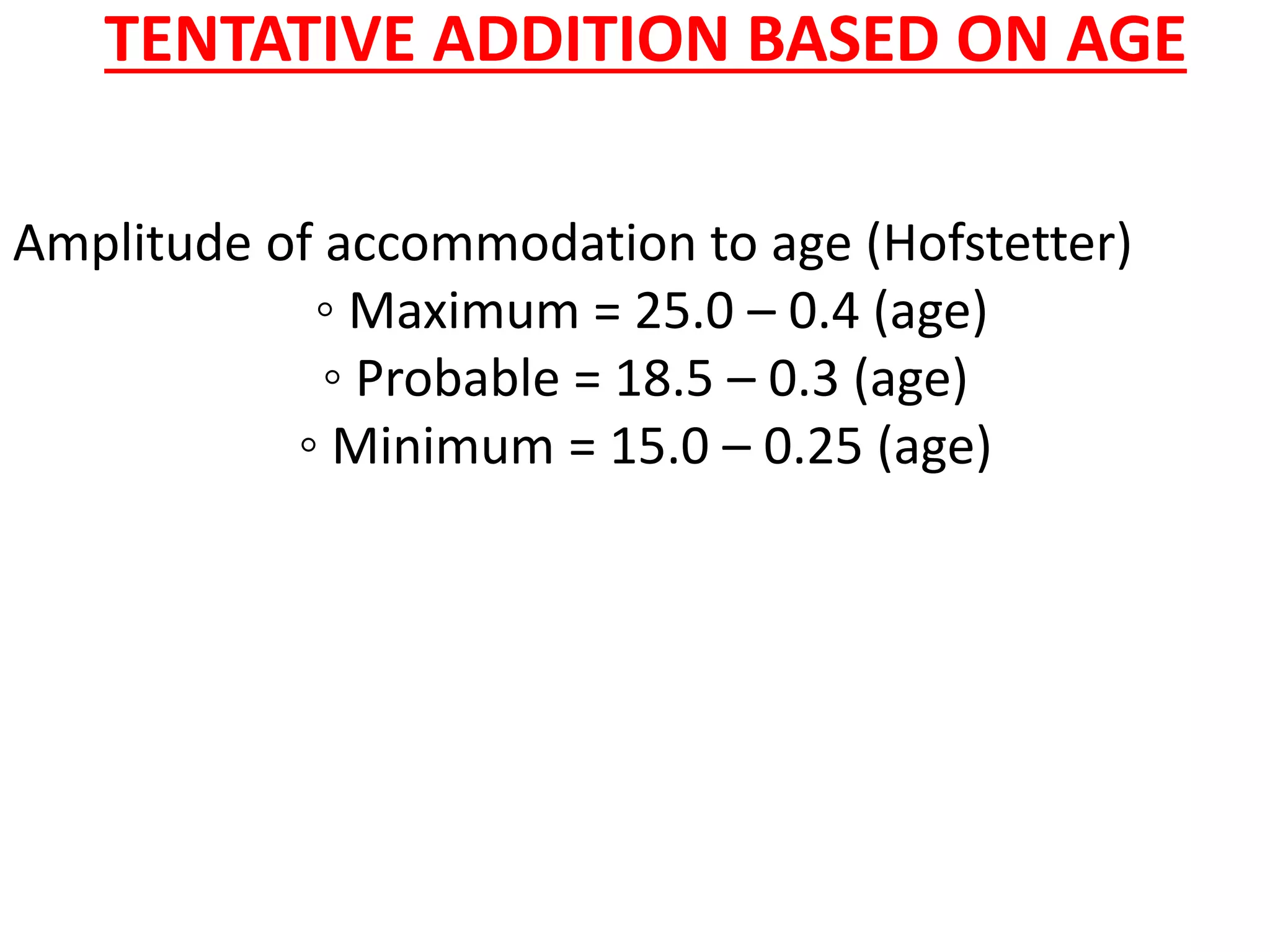- Presbyopia is the age-related loss of accommodation due to reduced elasticity of the lens and ciliary muscles. It starts in the 40s and complete loss of accommodation occurs by 50-60 years.
- Theories of accommodation include the Helmholtz theory of ciliary muscle contraction relaxing the zonules to allow lens curvature change, and the Schachar theory of reduced perilenticular space limiting ciliary muscle effect.
- Risk factors include occupation, geography, gender, medical conditions, and drugs. Treatment options include glasses, contact lenses, and various surgical procedures like LASIK, multifocal IOLs, and scleral expansion bands.























































